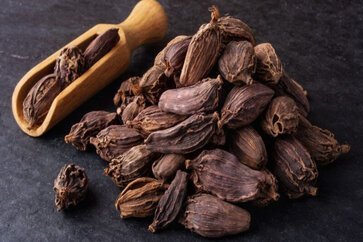How To Live A Pain Free Life With Ayurveda?
Pain can manifest as physical discomfort and is typically triggered by disease or injury. Even when the pain is mild or localized to a specific part of the body, it can significantly disrupt daily life and well-being.

Pain takes various forms, encompassing sports injuries, eye discomfort, muscle pain, sprains, chronic abdominal pain, spasmodic chronic pain like kidney stones, persistent toothache, joint pain due to inflammation, and more.
While analgesics offer a simple solution, the key lies in adopting a healthy lifestyle that enhances the body’s resistance and resilience. Such an approach can contribute to pain management and overall well-being.
Ayurveda View on Chronic Pain
According to Ayurveda’s holistic philosophy, chronic pain stems from imbalances in Dosha (energy) influenced by various factors, including diet, digestion, stress, toxin accumulation, exercise levels, and daily routines.
Ayurveda attributes chronic pain to the vitiation of Vata Dosha, and once effectively treated, the pain tends to naturally dissipate. Poor dietary choices, impaired digestion, and ineffective elimination can lead to toxin buildup in the tissues, triggering pain.
Certain foods can sensitize nerves, amplifying pain responses. The accumulation of stress and disruptions in bodily rhythms due to an unhealthy lifestyle can destabilize the nervous system, making individuals more prone to chronic pain.
Moreover, any factor that hampers the body’s natural healing capacity can hinder the recovery from chronic pain. Since various factors can manifest as symptoms, Ayurveda focuses on assessing the root causes and restoring Dosha balance by identifying physical abnormalities and tailoring the right treatment to each symptom.
Since individuals may have different underlying causes for similar disorders, Ayurveda evaluates imbalances in the body and determines the body’s operational mode.
It identifies these imbalances that give rise to disease and employs healing methods to remove them. By pinpointing the causal imbalances linked to a specific disorder, Ayurveda assists healthcare professionals in addressing the fundamental sources of poor health in each individual.
The Root Causes of Chronic Pain
Ayurveda identifies several fundamental imbalances or root causes that often underlie chronic diseases, including chronic pain. These include:
1. Diminished Natural Resistance and Immunity: When the body’s ability to reduce natural resistance and immunity is compromised, it can become more susceptible to chronic pain.
2. Toxin Accumulation and Circulation Blockage: The buildup of toxins in the tissues and blockage in circulation pathways can contribute to chronic pain.
3. Accumulated Physical and Mental Stress: Chronic pain can be exacerbated by the accumulation of both physical and mental stress over time.
4. Disruption of Natural Biological Rhythms: When natural biological rhythms are disturbed, it can lead to imbalances in the body, potentially resulting in chronic pain.
5. Nervous System Imbalance: An imbalance in the nervous system can play a significant role in the development and persistence of chronic pain.
6. Poor Nutrition: Inadequate nutrition can contribute to chronic pain, as the body may lack essential nutrients needed for overall health and pain management.
7. Inefficient Digestive System: A poorly functioning digestive system can hinder the absorption of nutrients and potentially exacerbate chronic pain.
Understanding and addressing these root causes is a crucial aspect of Ayurvedic approaches to managing chronic pain and promoting overall well-being.
Ayurvedic Way to Reduce Chronic Pain
Since chronic pain can be influenced by many factors, such as diet, digestion, toxin accumulation, stress, exercise levels, and daily routine, the Ayurveda approach to the condition is comprehensive by balancing many physiological functions simultaneously below are a few of them.
1. Eliminating Impurities and Toxins in the Body
Ayurveda identifies three types of toxins, with the most common being AMA. This type of toxin results from poor or weak digestion, leading to the accumulation of waste products in the digestive tract, often due to overeating.
If AMA isn’t eliminated from the body, it continues to accumulate. Over time, AMA becomes more reactive and combines with sub-doshas (body tissues) and malas (waste products like urine). When mixed with these physiological components, AMA transforms into a more potent and toxic form.
To address this, Ayurveda recommends a simple yet effective practice—regularly drinking hot water. This helps balance Vata and Kapha Dosha, strengthens digestive power, and aids in reducing the buildup of metabolic waste (AMA) that has accumulated in the body.
2. Maintaining Body Flexibility Through Exercise
Ayurveda emphasizes the importance of maintaining body flexibility for overall well-being. Flexibility can be nurtured through various activities, including stretching, walking, running, and dedicated flexibility exercises like yoga.
These practices have a profoundly positive impact on blood circulation and the functioning of the nervous system.
By engaging in regular exercise and flexibility-enhancing activities, the body’s natural healing response is stimulated, which can be instrumental in the management of chronic pain.
These practices not only promote physical flexibility but also contribute to the overall balance and health of the body.
3. Maintaining a Healthy Lifestyle
One of the key principles for living well, according to Ayurveda, is to avoid disrupting the body’s natural rhythms. This concept is elaborated in “dinacharya,” which refers to a daily schedule that enhances physiological processes and supports the body’s natural healing mechanisms.
By adhering to a dinacharya or daily routine that aligns with the body’s natural rhythms, individuals can promote overall health and well-being. This holistic approach not only maintains physical health but also nurtures mental and emotional balance, contributing to a healthy and fulfilling life.
4. Managing Mental Stress for Pain Relief
Maintaining mental, emotional, and physical well-being is essential to manage chronic pain effectively. Ayurveda recognizes that cognitive stress can exacerbate the symptoms of chronic pain.
To address mental stress, Ayurveda offers various therapies, including the use of herbal hot oil massages like the “Anhanga massage.”
Additionally, practicing a range of yoga postures can contribute significantly to mental stress reduction. These holistic approaches aim to not only alleviate physical pain but also promote mental and emotional balance, enhancing the overall quality of life.
5. Balancing the Body’s Nervous System
Imbalances in Vata Dosha are often at the root of painful conditions, and Ayurveda offers specific approaches to reverse these imbalances.
These Ayurvedic methods include herbal remedies, dietary adjustments, cleansing programs, meditation practices, yoga asanas (poses), and yoga breathing exercises known as “pranayama.”
By addressing Vata imbalances through these holistic practices, the body’s nervous system can be brought back into balance, contributing to the relief of pain and overall well-being. Ayurveda’s multifaceted approach aims to restore harmony and vitality to the body and mind.
6. Promoting Strong Digestion for Pain Management
Ayurveda emphasizes the importance of maintaining proper and robust digestion. According to Ayurvedic principles, undigested foods can give rise to toxins and impurities, which are subsequently absorbed by the body and distributed throughout the physiology.
These toxins can then accumulate in various tissues, disrupting their normal functioning and potentially leading to chronic pain. To enhance digestion and prevent this scenario, Ayurveda recommends the use of various spices and cooking oils that aid in digestion.
Additionally, the promotion of digestion is achieved by reducing the consumption of foods that hinder the digestive process. This holistic approach supports overall health and can contribute to the management of chronic pain.
7. Eating Nutrient-Rich Foods for Digestive Health
Ayurveda recommends the consumption of easily digestible foods like “kitchari” to promote proper nutrition. Embracing a well-balanced and nourishing diet not only enhances digestion but also plays a crucial role in restoring balance to specific functional aspects of the body.
In combination with herbal remedies, Ayurveda offers a comprehensive approach to address the underlying causes of chronic pain. This approach focuses on optimizing digestion and nutrition to support overall health and well-being while addressing the specific imbalances that may contribute to chronic pain.
Frequently Asked Questions (FAQs) Managing Joint and Muscle Pain with Ayurveda.
Q1. What is Ayurveda, and how does it approach pain management?
A1. Ayurveda is an ancient holistic system of medicine that focuses on balancing the body, mind, and spirit. It addresses pain by identifying its root causes and employing natural remedies to alleviate it.
Q2. Can Ayurveda help with chronic pain conditions?
A2. Yes, Ayurveda offers holistic approaches to managing chronic pain by considering factors like diet, lifestyle, and mental well-being. It aims to address the underlying causes of pain.
Q3. What role does diet play in Ayurvedic pain management?
A3. Diet is a crucial aspect of Ayurveda. It recommends specific dietary choices tailored to an individual’s dosha (body constitution) to reduce inflammation and support pain relief.
Q4. Are there specific herbs and remedies in Ayurveda for pain relief?
A4. Yes, Ayurveda utilizes a variety of herbs and formulations with anti-inflammatory properties to manage pain effectively.
Q5. Is yoga an integral part of Ayurvedic pain management?
A5. Yes, yoga is often recommended in Ayurveda for its role in promoting flexibility, improving circulation, and reducing pain.
Q6. How can Ayurveda help with the emotional and mental aspects of pain?
A6. Ayurveda incorporates stress-reduction techniques, meditation, and mindfulness practices to address the mental and emotional aspects of pain, promoting overall well-being.
Q7. Can Ayurveda be used alongside conventional medical treatments for pain?
A7. Ayurveda can complement conventional treatments. However, it’s essential to consult with healthcare professionals to ensure safe and effective integration.
Q8. Are Ayurvedic remedies safe for everyone?
A8. Ayurvedic remedies should be used under the guidance of trained Ayurvedic practitioners to ensure safety and suitability for individual health conditions.
Q9. How long does it take to see results with Ayurvedic pain management?
A9. The time to experience relief can vary depending on the individual, the type of pain, and adherence to Ayurvedic practices. Patience and consistency are key.
Q10. Can Ayurveda help prevent pain from recurring?
A10. Ayurveda’s holistic approach aims to address the root causes of pain, which can contribute to preventing its recurrence when practiced consistently.
References:
- Effects of Ayurveda interventions on acute pain and quality of life of a trigeminal neuralgia patient – A case report(1)
- Ayurveda–modern medicine interface: A critical appraisal of studies of Ayurvedic medicines to treat osteoarthritis and rheumatoid arthritis(2)
- Relieving Pain – The Ayurveda Way(3)
- A review on Pain Management through Panchakarma(4)


























